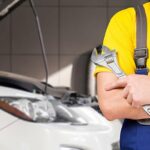Many car owners face the frustrating issue of a dead battery, often wondering if it’s possible to bring it back to life, especially when dealing with dry cell batteries. This guide explores a DIY method to potentially repair a dry cell car battery, drawing from practical experience and focusing on techniques that might help restore some functionality.
Dry cell car batteries, often Sealed Lead Acid (SLA) or Absorbed Glass Mat (AGM) types, are commonly used in vehicles and other applications. Over time, these batteries can lose their charge and capacity, sometimes due to sulfation – a buildup of lead sulfate crystals on the battery plates. The method described here aims to address this issue and potentially rejuvenate your battery.
One approach to attempt repair involves a combination of charging, discharging, and in some cases, adjusting the electrolyte. In a personal experiment with two old, seemingly dead 12V dry cell batteries (initially reading only 4.5V), a process was undertaken to see if they could be revived. The first step was slow charging, followed by discharge testing to assess their initial capacity. One battery showed a very low capacity of just 402mAh, while the other was significantly better at 4424mAh.
To further attempt restoration, the batteries were carefully opened. Instead of using distilled water, sulfuric acid, sourced from an old lead-acid battery, was used to replenish the electrolyte. A pulse charger, a device designed to deliver short bursts of energy to break down sulfate crystals, was then employed. The first battery, unfortunately, showed signs of a bad cell, failing to charge beyond 10V. However, the second battery responded positively after two days on the pulse charger. Discharge testing then revealed a capacity of 6682mAh, a notable improvement for a battery that was initially considered dead.
This same pulse charging method was also tested on a motorcycle starter battery (12V 3Ah). After several charge and discharge cycles using the pulse charger, the battery regained enough functionality to start the engine and maintain a decent charge rate.
The pulse charger used in these experiments was based on a simple 555 timer circuit, generating a 1kHz signal to switch a MOSFET on and off. This created 1ms pulses of up to 18V and 10A. While the effectiveness of pulse chargers, also known as desulfators, is debated, these experiences suggest they can play a role in battery restoration in some cases.
It’s crucial to understand that the success of this repair method is not guaranteed. Results can vary significantly. While some batteries might respond well and regain a useful capacity, others may be too damaged for repair. In the case of the first battery tested, even with these methods, it could not be revived, likely indicating irreparable cell damage. If a battery shows signs of overheating or rapidly dropping voltage during charging, it is a strong indication of internal damage beyond repair.
In conclusion, attempting to repair a dry cell car battery using methods like electrolyte adjustment and pulse charging can sometimes yield positive results, potentially restoring some capacity and extending battery life. However, it’s essential to have realistic expectations. If a battery is severely degraded, replacement is often the most practical and reliable solution. Furthermore, when purchasing a new battery, remember that returning your old one can often qualify you for a discount, making replacement a more economical choice in the long run for batteries beyond repair.


